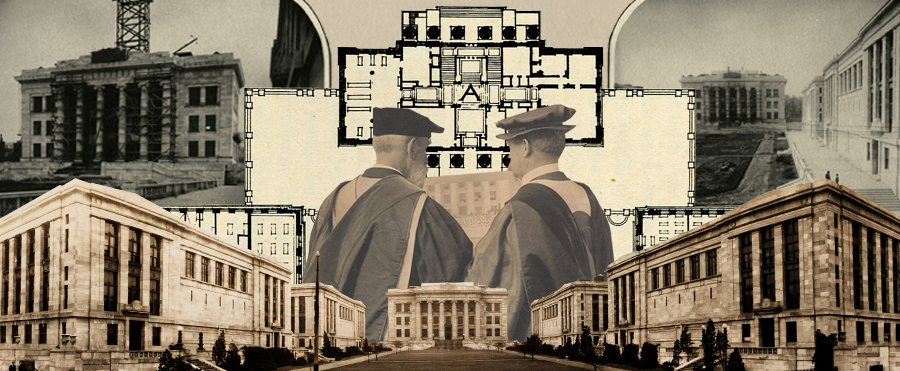Monumental Success: The Centennial of the Harvard Medical School Quad

When the Harvard Medical School moved into its new home on Boylston Street in the fall of 1883, the building was thought to be sufficient for "many generations" of students, but in fact the limitations of the Boylston building and the increasing number of both students and faculty prompted the decision to move and build again. By the opening of the 20th century, the Medical School had nearly 600 matriculants—nearly three times the number in 1883—and a faculty of 40 with over 100 additional instructors, lecturers, and assistants in 24 departments—with insufficient laboratory space for many of them. A new plan of study, adopted in 1899, increased the amount of student laboratory work as well.
At its meeting on February 3, 1900, the Faculty of Medicine resolved that, rather than spread the school out physically, "the interests of Medical Education in its broadest sense will be best served by the greatest practicable concentration in one locality of the buildings devoted to instruction, since by this means teachers will be helped, students stimulated, loss of time prevented, and a great dimunition of expense secured both for plant and for maintenance." The Faculty also proposed that a hospital be created under the care of the Medical School, following the model of Johns Hopkins Medical School in Baltimore. Later that spring, the Faculty and the Harvard Corporation agreed to purchase the Francis estate for $600,000. This parcel of land—over 26 acres between Longwood Avenue and Francis Street— would be the site of the new medical campus.
Credits
A Monumental Success is an exhibit curated by Jack Eckert for the Center for the History of Medicine. The online exhibit was created in OnView by Andra Langoussis in October 2013.
